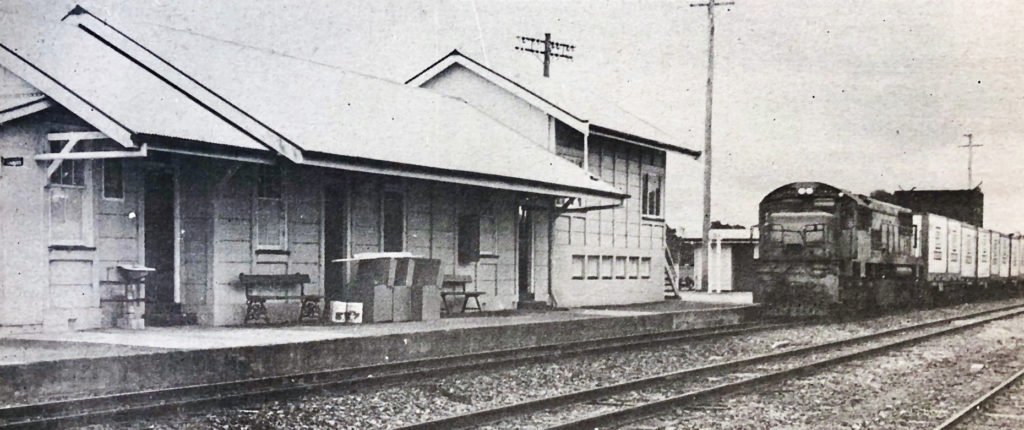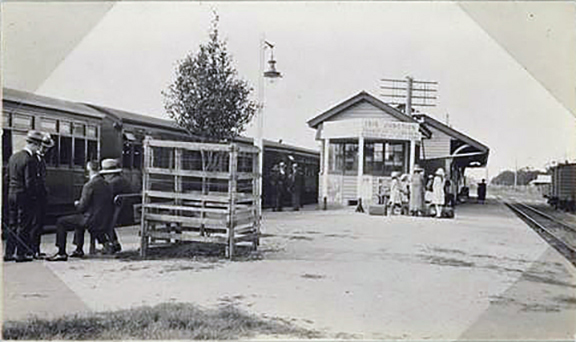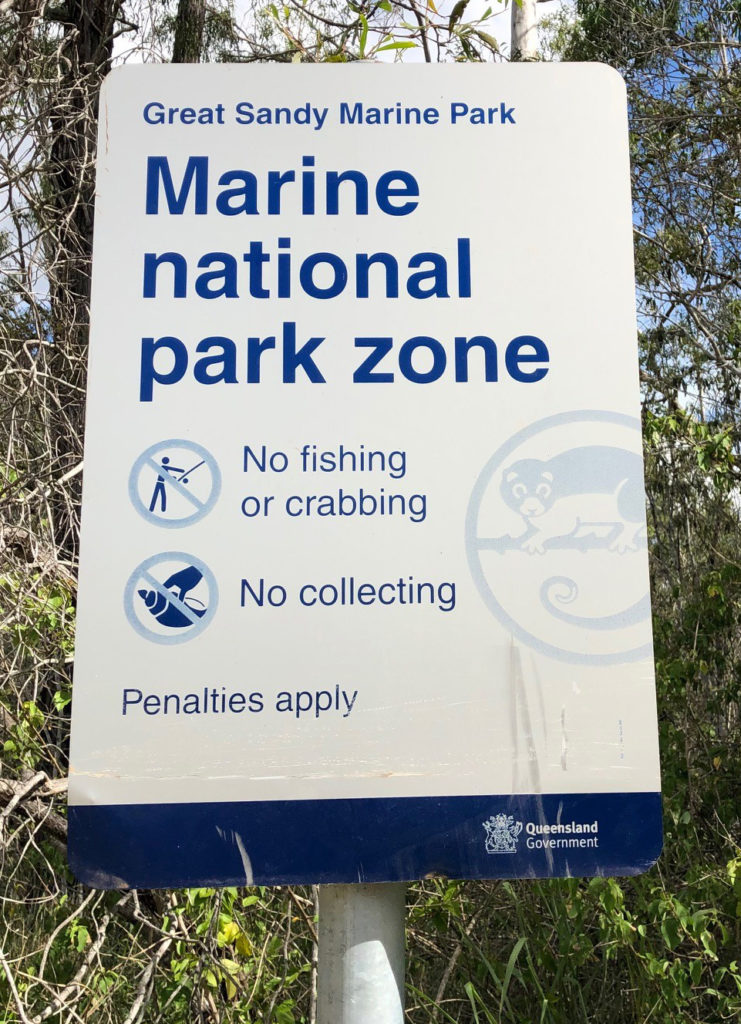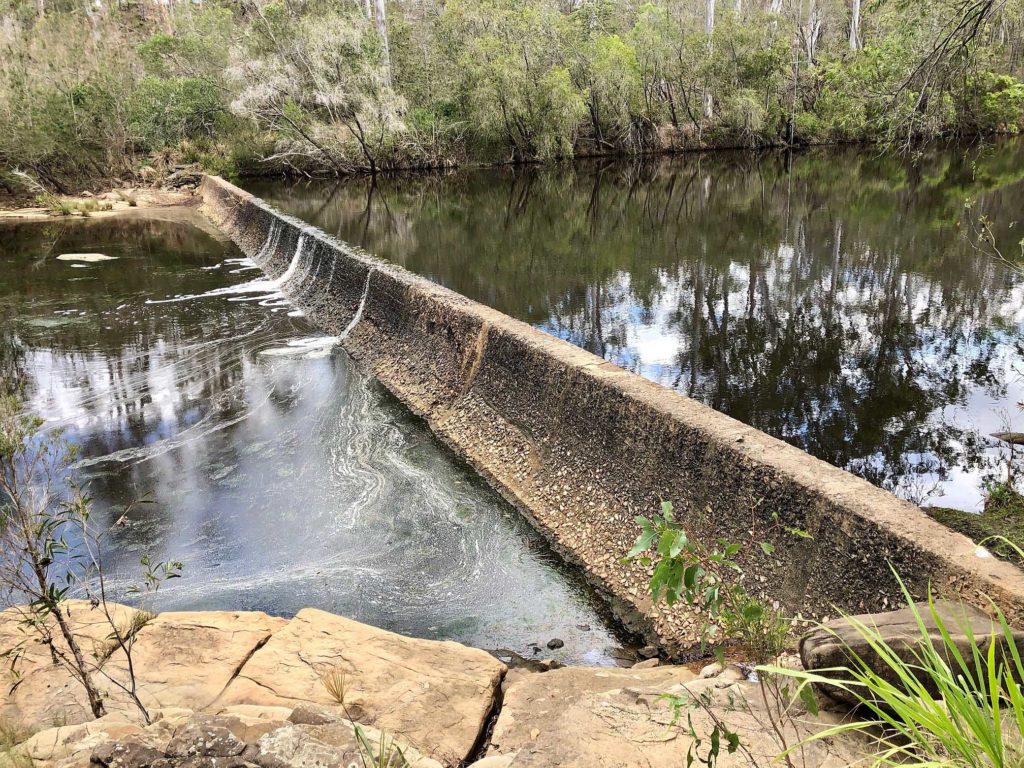
Passengers riding the daily train service between Bundaberg and Brisbane speed through Isis Junction, once the connection point of the North Coast Line and the branch line to Childers.
Isis Junction was also the site for the surveyed, but never developed, community to be named Isistown.
Little remains of the station save for a crane once used to unload goods, a little of the raised platform where the station buildings once sat and the remnants of the original railway bridge across the Isis River.
While the heyday of Isis Junction has long passed, the location has a few virtually undiscovered “gems”, the least of which is the remains of the original bridge.
Partly dismantled and standing only metres from the new bridge with its electrified line, the concrete pylons supporting the old structure look as good as the day they were poured.
They make a somewhat romantic sight standing tall in the bed of the river.
Isis Junction station was opened in October 1887 as the line from Brisbane’s Roman Street snaked its way north opening up services to numerous communities.
According to records, the Isis Branch line to Childers and beyond was closed in 1955 with Isis Junction ceasing to operate as a functioning station and a goods depot in 1991.

Access to the Isis River is available off the Buxton Road and through the old Isis Junction yards.
A rough track leads to a crossing adjacent to the bridges.
It’s a picturesque spot to visit and from which to view the bridge structures – the past and the present.
Located not far upstream from the crossing is a historic weir where the fresh and saltwater meet.
Childers resident Doreen Cole well remembers the early years of the Isis Junction as she regularly journeyed to, and past, the station more than 75 years ago with her family on the way to Buxton.
“There were 11 houses at the Junction, all railway houses except one which was owned by Frank and Bessie List who held a few acres and lived most of their lives at Isis Junction.”
Doreen recalls that there were eight or ten passing lines and also a loop where a train could turn around.
“When the passenger train arrived, it was a mad rush into the refreshment room to get a cup of tea and a sandwich,” said Doreen.
“The sandwiches were the biggest I have ever seen – about eight inches (200mm) square.”

According to Doreen, a fire, considered suspicious, burned down the Isis Junction rail buildings in 1956.
“Strangely it was the same day the pay roll came to the Junction. There was reportedly 700 pounds in the payroll box and there is plenty of speculation as to what happened to the money,” she said.
“The fire started at midday while everyone was on lunch and with Childers being miles away and having only one fire truck, there was no hope of saving the buildings.
“As well as all the buildings being destroyed, three wagon loads of bagged sugar, two truck-loads of timber and a wagon of fertilizer were destroyed. It would have been some fire.
“During the crushing season bagged sugar was regularly freighted from the Junction to Urangan at Hervey Bay where it was unloaded from the jetty onto ships.”
Following the destruction caused by the fire a much smaller station was built and staff numbers dwindled as personnel were moved elsewhere until they disappeared altogether.”
Freight for Childers continued to be unloaded at Isis Junction at transported into town by Col Dowling who held the contract.
Eventually this practice also ceased, and freight was backloaded from Bundaberg.
While public access to the river crossing and bridge structures is permissible, any entry onto nearby railway land and its infrastructure is strictly forbidden.
A sign stating that the river is identified as a Marine National Park Zone as part of the Great Sandy Marine Park and a protected area is located where a track leads down to the river and the concrete weir.
The sign is specific in prohibiting fishing, crabbing or the removal of marine life.


The weir on the Isis River where fresh and saltwater meet.
- Related stories: When Childers really was a “knockout”







